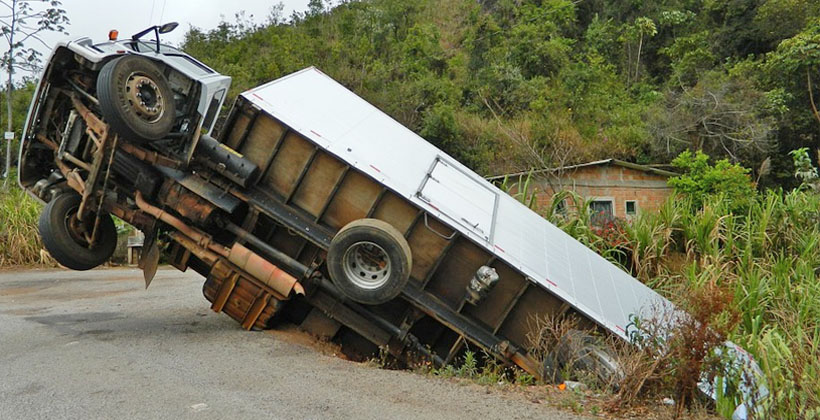SAFETY ON THE ROAD
This page is developed to raise awareness about common driving errors and to provide valuable tips and preventive measures that commercial drivers and fleet managers can take to help drivers to drive safe, avoid dangerous driving situations and prevent accidents. We want to motivate and encourage all professional drivers to learn more about risk factors, examine their behavior and learn how to become safety-conscious, well-trained, commercial drivers.
DROWSY DRIVING - THE SILENT KILLER ON THE ROAD! - Falling asleep at the wheel happens all to often on our roads, with terrifying consequences. Even if you don't go so far as to actually fall asleep behind the wheel, driving when you are drowsy means that your concentration and risk perception are impaired, so you're more likely to have an accident. Sleep deprivation slows reactions to stimuli, decreases accuracy of responses, and leads to long lapses in attention. Learn the risks of drowsy driving and how to protect yourself.
The warning signs of drowsyness are:
- Difficulty focusing
- Yawning repeatedly or rubbing your eyes
- Frequent blinking or heavy eyelids
- Trouble remembering the past few miles driven
- Missing your exit or traffic signs
- Drifting from your lane
- Daydreaming; wandering or disconnected thoughts
- Trouble keeping your head up
- If you are driving at night and lights start to blur.
- Feeling restless and irritable
- Tailgating or not maintaining a safe following distance
- Hitting a rumble strip on the side of the road
Drowsy driving is the dangerous combination of driving and sleepiness or fatigue. The AAA Foundation for Traffic Safety research has estimated that 7% of all crashes in which a vehicle was towed from a scene, 13% of all crashes that result in hospital admission, and 16-21% of all fatal crashes involve a drowsy driver. Drive alert and stay unhurt. Read more...
ACUTE SLEEP DEPRIVATION CRASH RISK - Experts recommend that healthy adults should sleep for at least 7 hours daily. The results of the Accute Sleep Deprivation Study indicate that drivers who usually sleep for less than 5 hours daily, drivers who have slept for less than 7 hours in the past 24 hours, and drivers who have slept for 1 or more hours less than their usual amount of sleep in the past 24 hours have significantly elevated crash rates. Click here to read more...
TRUCK ROLLOVER PREVENTION - Most truck rollovers are actually preventable. Read on to learn how to prevent truck rollover and to find an overview of possible causes of rollovers. Truck rollovers have a higher fatality rate than other types of heavy vehicle collisions.
In The Large Truck Crash Causation Study (LTCCS) performed by the U.S. Federal Motor Carrier Safety Administration, it was found that there are three main contributing factors to cargo truck rollover accidents, which include the following:
1. SPEED
2. INATTENTION
3. POOR CONTROL
Many factors related to heavy vehicle operation, as well as factors related to roadway design and road surface properties, can cause heavy vehicles to become yaw unstable or to roll. Over 78% of rollovers involve some kind of driver error, and over 90% of the time, the rollover is not the "first" event. As a driver, YOU are the key component for preventing rollovers. Read more...
CARGO THEFT - Cargo theft is a complex international problem affecting consumers and businesses and has rippling effect on the economy. The global economic crisis and a thriving black market keeps cargo thieves in business.
Cargo can be stolen at any point of distribution and it is usually sold through black market distribution channels. Stolen products may also enter the supply chain as a result of illegal transactions by individuals and unaware legitimate distributors. Any product can be stolen, but the most stolen products are: food, electronics, pharmaceuticals, automotive and consumer apparel. These stolen products may put consumers at risk because they may not have been stored or handled properly or may have been tampered with while out of the normal supply chain, and therefore may cause harm. Click here to read more...

